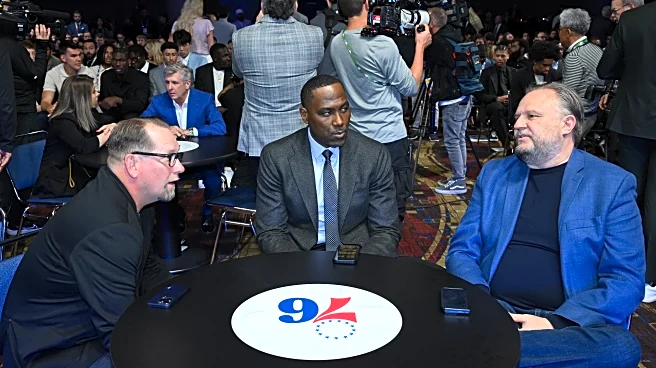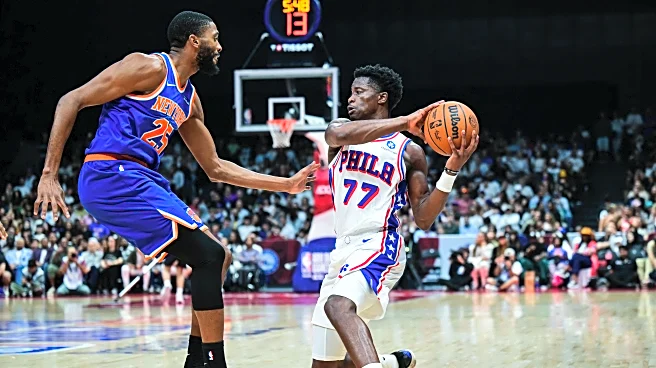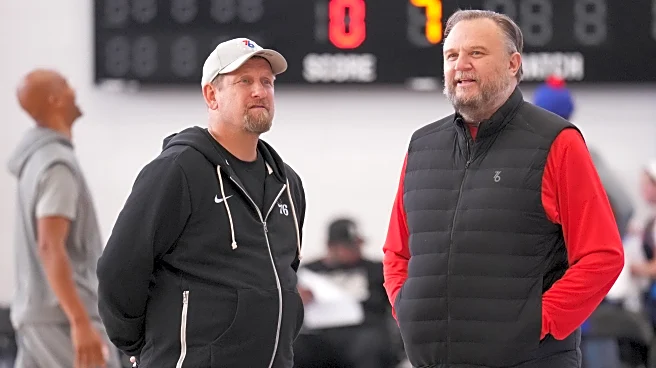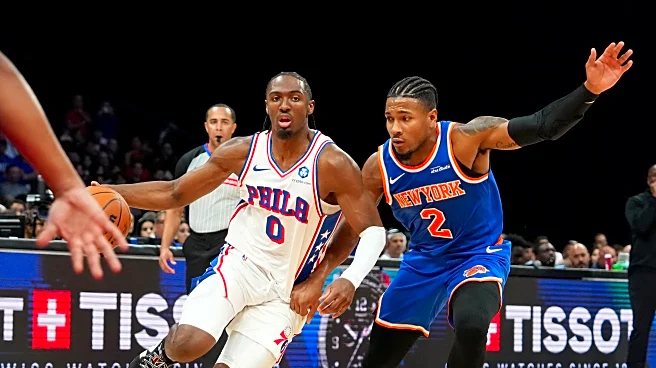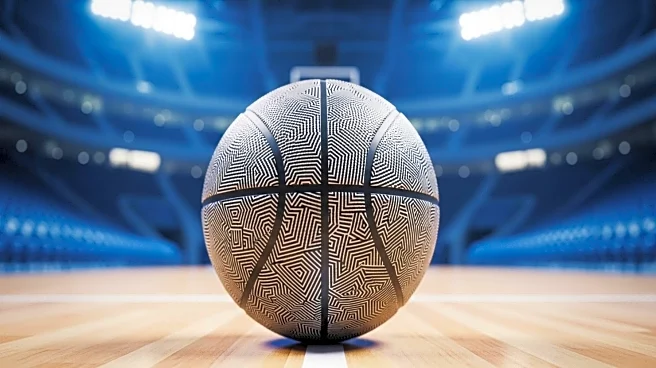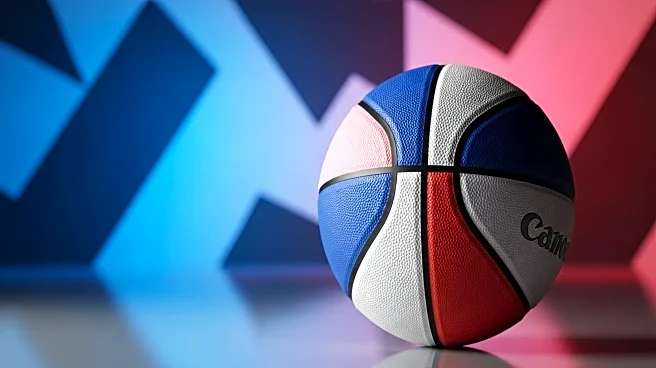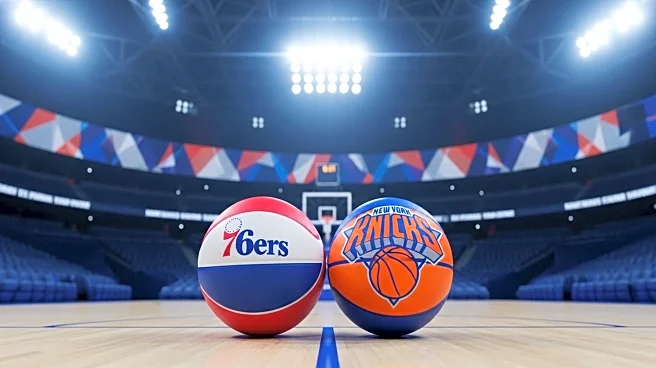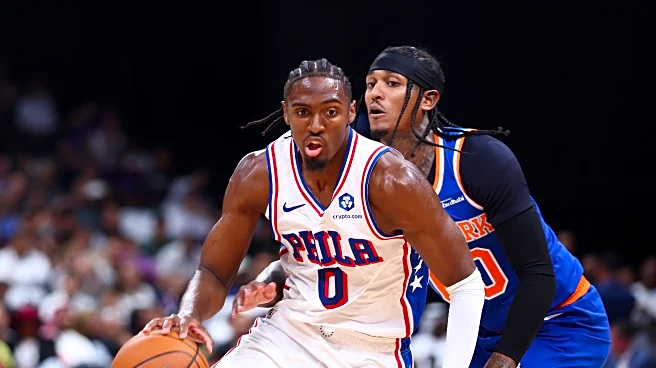It took the entire offseason, but the Sixers’ roster is now set heading into the 2025-26 campaign. Guerschon Yabusele is gone, Quentin Grimes is back on his qualifying offer, and VJ Edgecombe, Johni Broome,
Trendon Watford, Dominick Barlow, Jabari Walker and Hunter Sallis have joined the squad. Otherwise, they’re largely running back the same group from last year.
Plenty could change between now and the Feb. 5 NBA trade deadline, though. Last month, NBA insider Jake Fischer reported that there had “been buzz all summer long about the Sixers looking to potentially move one of, if not both, Andre Drummond and Kelly Oubre.” The Sixers also still have the $5.7 million taxpayer mid-level exception in their back pocket, although given their recent history of ducking the luxury tax, it’s fair to be skeptical that they’ll actually spend it.
Barring an unexpected blockbuster trade involving one of Joel Embiid, Paul George or Tyrese Maxey, though, the Sixers’ long-term financial outlook won’t change much. If anything, they’ll just be working around the margins, trying to avoid the draconian penalties that teams face when they cross the first or second apron.
Where the Sixers stand for 2026-27
We won’t know exactly where the 2026-27 salary cap lands until June 30, 2026. With that said, the NBA is already starting to provide rough estimates to teams.
Initially, the league projected that the cap would rise 7 percent from its current $154,647,000, according to ESPN’s Bobby Marks, which would put it around $165.5 million. In September, Fischer reported that projections for the cap have now jumped up to $166 million. It can rise as high as 10 percent year-over-year, so the most it can be in 2026-27 is $170.1 million, but we’ll use the latest projection of $166 million as our baseline here.
If the 2026-27 cap does land at exactly $166 million, Embiid’s three-year max contract extension will start at $58.1 million. The salaries for George ($54.1 million) and Maxey ($40.7 million) are already set, so that trio alone would gobble up roughly $153 million. Add in Edgecombe ($11.7 million) and Jared McCain ($4.4 million), and the Sixers are already set to be over the salary cap with only those five players. Broome ($2.15 million) and Justin Edwards ($2.4 million) are the only two other Sixers players who have guaranteed salaries next season.
Between their Big 3, Edgecombe, McCain, Broome and Edwards, the Sixers already have $173.6 million in guaranteed salary on their books for 2026-27. They also have a $2.8 million team option on Watford, and Adem Bona’s $2.3 million salary is fully non-guaranteed. Meanwhile, Grimes, Kelly Oubre Jr., Andre Drummond, Kyle Lowry and Eric Gordon are all set to become unrestricted free agents.
The tax/apron situation for 2026-27
Here are the projected luxury-tax/apron lines for 2026-27 based on the $166 million salary-cap projection:
- Luxury tax: $201,690,000
- First apron: $210,690,000
- Second apron: $223,690,000
So, with only seven players under contract in 2026-27, the Sixers are roughly $28 million below the projected tax line, $37 million below the first apron and $50 million below the second apron. If (when?) they guarantee Bona’s contract and pick up their team option on Watford, they’d be at $178.7 million in total salary with nine players under contract. That would leave them $22.9 million below the tax line, $31.9 million below the first apron and $44.9 million below the second apron.
If Grimes sticks around for the whole season, he’ll once again enter next offseason as the Sixers’ major X-factor, particularly if he sticks to his reported asking price of $25 million per year. That alone would push the Sixers over the tax line and would put them close to the first apron with only 10 players under contract. Even if they left one roster spot open heading into the season, as is tradition in the Daryl Morey era, they’d cross the first apron once they filled out their other four roster spots.
The Sixers do have full Bird rights on Grimes, so they can re-sign him to anything up to a max contract even though they already project to be over the 2026-27 salary cap. However, their proximity to the tax line and the aprons will likely cause them to draw the line in negotiations, just like this past offseason. That’s particularly true if the Sixers also want to re-sign Oubre to anything above a minimum contract.
The Sixers also may want to leave themselves enough space under the aprons to maintain access to a mid-level exception. The non-taxpayer MLE in 2026-27 is projected to be worth $15,139,000, while the taxpayer MLE is projected to be $6,102,000. Using the non-taxpayer MLE hard-caps a team at the first apron, while using the taxpayer MLE hard-caps a team at the second apron.
Barring a major trade, the non-taxpayer MLE is likely a non-starter in 2026-27. If they kept Bona and Watford and then used it, they’d be at nearly $193.9 million in salary with only 10 players under contract. They’d have only $16.8 million in wiggle room under the first apron to fill out their remaining 4-5 roster spots, which would all but ensure that Grimes is a goner. They might not even be able to retain Oubre if they go that route.
If they use the $6.1 million taxpayer MLE instead, they’d be at $184.8 million in salary. That would leave them $38.8 million below the second apron, which should give them enough flexibility under the hard cap to re-sign one (if not both) of Grimes or Oubre. Granted, the ownership group might not be willing to shell out that type of money unless the Sixers look like legitimate championship contenders heading into next season.
This was among the many reasons why a three-max build was such a risky endeavor for the Sixers. They have to constantly replenish their supporting cast around their three stars on a tight budget. That job won’t get any easier next offseason, either.
Unless otherwise noted, all stats via NBA.com, PBPStats, Cleaning the Glass or Basketball Reference. All salary information via Salary Swish and salary-cap information via RealGM.
Follow Bryan on Bluesky.

